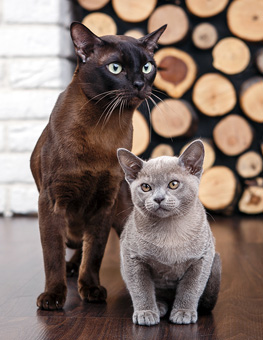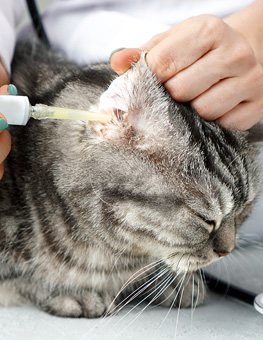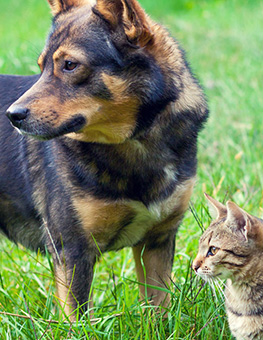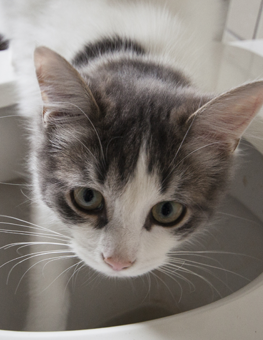After Neuter Care for Your Pet
Choosing to neuter your pet (sterilize your male pet) is a brave and important decision.

Follow all instructions by your veterinarian so that your handsome boy recovers quickly.
It can be a little nerve wracking, but the neuter procedure is not very invasive and does not take a lot of time. The majority of neuters are not abdominal surgeries (unless the male is cryptorchid which means they retain either one or both of their testicles in their abdomen) and pets recover very quickly and easily.
Most pets take about 3-5 days to feel normal again, but complete healing takes place after 14 days. Make sure that all medications dispensed by your Veterinarian are given as directed. This usually consists of a pain medication and sometimes an antibiotic as well. Be sure to follow all discharge instructions by your Veterinarian so that your handsome boy recovers as quickly and as smoothly as possible. Wait the full 14 days to give baths or swim as this can weaken the skin that is trying to heal.
After Neuter Care For Cats
Cats are particularly quick to get back to normal and usually want to start playing and being active within a day or two. However, be sure to prevent them from licking at their incision as this can lead to infection. All pets after surgery should not be allowed to lick, bite or chew at their incisions.

“E-collars” can prevent unwanted contact with the incision site.
Elizabethan collars or “E-collars” are a great way to prevent unwanted contact with the incision site. Most cats, like dogs, dislike the e-collar, but they are very smart and are capable of adjusting quickly with it on. Eating, drinking and going to the bathroom soon become easy after a little practice. Thankfully, most male cats will stop (or never start) marking their territory by spraying once they are neutered.
After Neuter Care For Dogs
Dogs tend to recover quickly as well; some dogs benefit from a dog pad after surgery if they are still feeling lethargic from the anesthesia and are not willing to go to the bathroom outside. If your pet is not yet housebroken, use a dog pad to help encourage them to go to the bathroom. Outdoor walks are safe as soon as anesthesia has completely worn off and you are outside with your pet to monitor them. Often times though, your pet will want to smell the fresh air immediately. Carrying your pet under the chest and abdomen (with an arm around their chest and an arm in front of their hind legs) may help prevent stretching and/or pressing on the incision. This also allows you to help them outside for a potty break if needed.
Dogs, like many cats are very comfortable walking after a neuter. If there is any redness, bruising or discharge from the incision that seems to be worsening with time or if there is any active bleeding from the incision site you should call your veterinarian. Infection always starts with redness, it will spread with time and look worse as the days pass instead of better if neglected.

If your pup feels lethargic after surgery and is not willing to go to the bathroom outside, try a dog pad.
It is also common for most pets to skip a bowel movement after anesthesia as they have to have “fasted” or having skipped breakfast in the morning before the procedure. Anesthesia slows down the gastrointestinal tract which also delays transit time in the intestines. Don’t worry if their schedule is off, it will go back to normal as soon as they are back in their regular pattern of eating and going outside which can take a few days.
For smaller dogs, a play pen is a nice way to keep an eye on your pet as they heal, but also allows them to move around a little in a controlled setting. Utilizing gates for larger dogs may be beneficial. The kitchen is also a good area as there is no furniture to jump on and off. Short walks outside for bathroom breaks are just fine, but then back inside for rest until healing is complete.
Let’s not forget the E-collar, better to be safe than risk infection. It can be a challenge, but we know you are up for it! Ask your veterinarian for any tips they may have to help him heal his fastest.
















